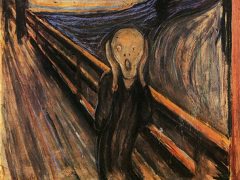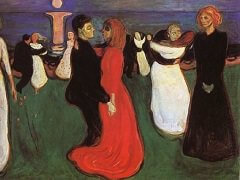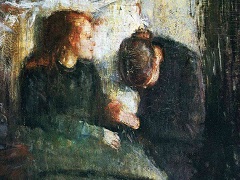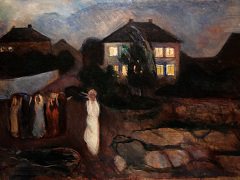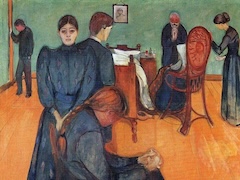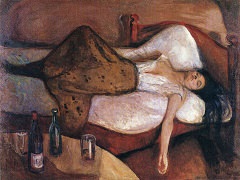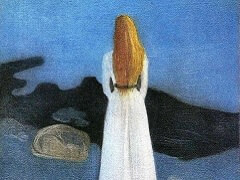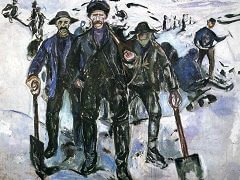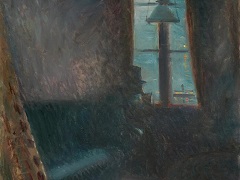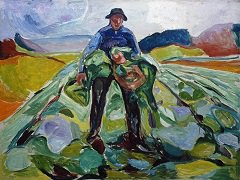Starry Night, 1893 by Edvard Munch

Munch's setting for many of the Frieze paintings is the beach at Aasgaardstrand in the Oslo Fjord, where he had spent his summers since the late 1880s. He came to love the shore with its stony beaches that separated the sea from the forest, and it is this particular scenery that we come upon repeatedly in such work as Starry Night. One of its most prominent motifs is the hugely bulking shape of three linden trees whose crowns have merged to form a single outline. Prosaic enough in actuality, but raised by Munch's nocturnal vision to unexpected potency, the tree group with the white fence in front and even the white flagpole that stands out against the foliage like a mysterious light reflection may still be found in their places today, testifying to Munch's fundamentally literal approach.
Like Starry Night by Van Gogh, Munch's Starry Night, 1893 also endows his nocturnal landscapes with animistic qualities. Sky, water, and earth, divided yet rejoined in a larger unity, are the subject of this work. Land and sea are locked in an embrace in which each advances toward and recedes from the other. The dividing line marking the contiguous position of the two elements undulates boldly from the left foreground deep into the picture space before losing itself in the conspicuously inverted U-form fashioned by the combined tree crowns. Contained in this anthropomorphic vision of nature are the recurrent themes of human life and love rendered through an impersonal parable.

